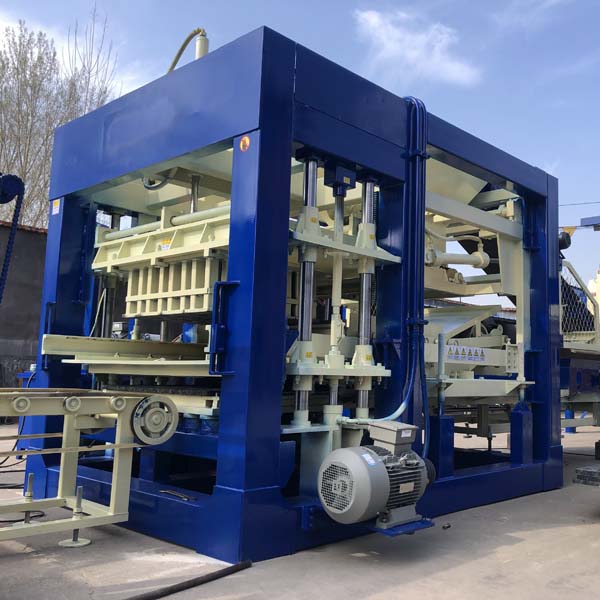
**Title: Enhancing Operational Efficiency: Implementing Predictive Analytics for Maintenance Planning in Full-Automatic Lines**
**Introduction**
In the realm of full-automatic block production, the integration of predictive analytics is revolutionizing maintenance planning. Predictive analytics leverages advanced algorithms and real-time data to forecast equipment failures, allowing for proactive maintenance interventions. This article explores the benefits and implementation strategies of predictive analytics in full-automatic lines, emphasizing its pivotal role in optimizing maintenance practices and ensuring continuous operational efficiency.
**1. Understanding Predictive Analytics in Full-Automatic Lines**
Predictive analytics involves the use of historical and real-time data, statistical algorithms, and machine learning techniques to identify the likelihood of future events. In the context of full-automatic block production, predictive analytics is applied to machinery and equipment to anticipate potential failures and issues before they occur. This forward-looking approach allows for timely and targeted maintenance activities, minimizing unplanned downtime and optimizing overall operational efficiency.
**2. Benefits of Predictive Analytics for Maintenance Planning**
* **Reduced Downtime:** By predicting potential equipment failures, predictive analytics enables maintenance teams to address issues proactively, minimizing unplanned downtime. This results in increased overall equipment effectiveness (OEE) and production continuity.
* **Optimized Maintenance Scheduling:** Predictive analytics helps in creating a more precise and efficient maintenance schedule. Instead of relying on fixed time intervals or reactive maintenance, the system identifies the optimal times for maintenance activities based on the actual condition of the equipment.
* **Extended Equipment Lifespan:** Timely intervention through predictive analytics allows for the identification and replacement of components before they reach the end of their lifespan. This prolongs the overall lifespan of equipment, reducing the need for frequent replacements and associated costs.
* **Cost Savings:** Proactive maintenance based on predictive analytics leads to cost savings by preventing major breakdowns, reducing emergency repairs, and optimizing the use of spare parts. This contributes to a more efficient allocation of maintenance resources.
* **Enhanced Safety:** Predictive maintenance reduces the risk of sudden equipment failures, enhancing safety on the production floor. This is particularly crucial in full-automatic lines where human-machine interactions are limited, and equipment reliability is paramount.
**3. Implementation Strategies for Predictive Analytics in Full-Automatic Lines**
* **Data Collection and Integration:**
– Gather comprehensive data from sensors, equipment logs, and historical maintenance records.
– Integrate data from different sources into a centralized platform for analysis.
* **Selection of Key Performance Indicators (KPIs):**
– Identify critical KPIs relevant to equipment performance and health.
– Examples include vibration levels, temperature, energy consumption, and cycle times.
* **Machine Learning Models:**
– Utilize machine learning algorithms to analyze historical data and identify patterns indicative of potential failures.
– Train models to continuously improve accuracy and adapt to changing operating conditions.
* **Real-Time Monitoring:**
– Implement real-time monitoring systems that provide instant feedback on equipment status.
– Integrate sensors and IoT devices to continuously feed data into the predictive analytics model.
* **Condition-Based Alerts:**
– Set up condition-based alerts to notify maintenance teams when specific parameters indicate a potential issue.
– Establish alert thresholds based on the analyzed data and the desired level of risk tolerance.
* **Integration with Maintenance Management Systems:**
– Integrate predictive analytics systems with existing maintenance management systems for seamless communication.
– Automate work order generation based on predictive insights.
* **Continuous Improvement:**
– Regularly review and refine predictive models based on new data and evolving equipment conditions.
– Foster a culture of continuous improvement by encouraging feedback from maintenance teams and operators.
* **Training and Skill Development:**
– Provide training to maintenance teams on the use and interpretation of predictive analytics insights.
– Develop the necessary skills to interpret and act upon predictive analytics recommendations.
**Conclusion**
The implementation of predictive analytics for maintenance planning in full-automatic lines is a game-changer for the manufacturing industry. By harnessing the power of data and advanced analytics, companies can shift from reactive to proactive maintenance strategies, ensuring optimal equipment performance, reduced downtime, and enhanced overall efficiency. As the technology continues to evolve, the integration of predictive analytics is poised to become a standard practice in full-automatic block production, driving a new era of reliability and productivity.
